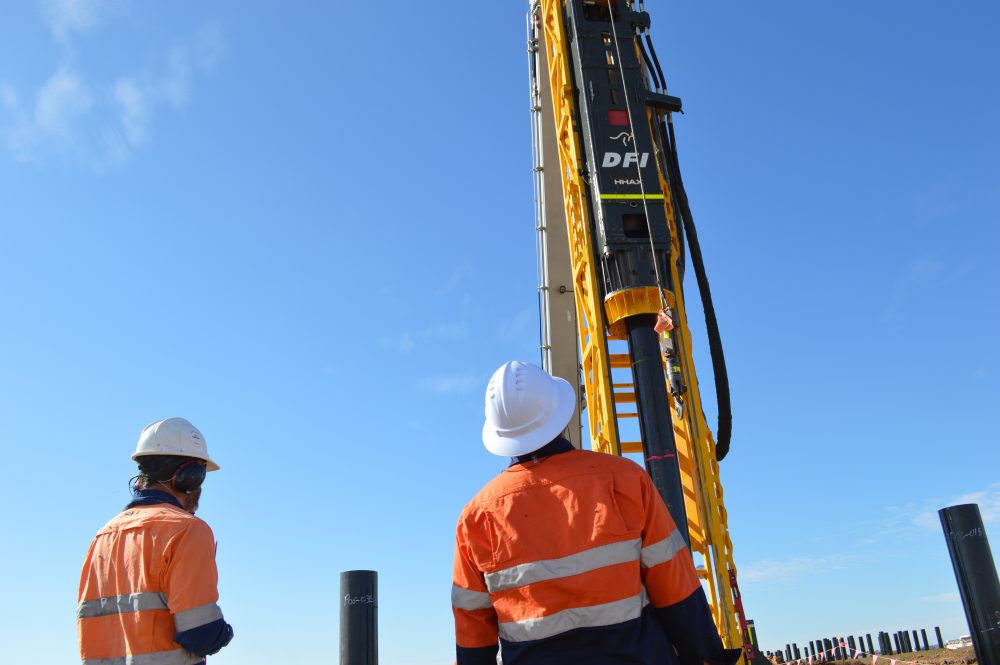Unearthing avoidable costs in foundation system construction
Cost and time overruns are the bane of every project manager, and foundation construction projects are far from immune. What’s all too often ignored, however, is how many of these extra expenditures are preventable.

Matt Meyer, Director of DFI Energy Services, is intimately familiar with what is required to deliver on projects from start to finish. DFI has designed, supplied and installed foundation systems for industrial clients for more than 25 years, and has been busy in 2018 installing foundations for a major gas producer in Southeast Queensland.
“What it really comes down to with any project is time and money,” Mr Meyer said.
“The more complex a project becomes, the more inefficient and costly it tends to be.”
According to Mr Meyer, avoidable project expenses can often be traced back to a couple of common problems: insufficient experience, and lack of continuity between a project’s many layers.
When a contractor has limited background knowledge or lacks prior experience with similar projects, a lot of time can be wasted with sub-optimal methods and equipment.
Changing the system
For project managers looking to significantly improve savings and efficiency, it’s often more effective to reevaluate a project approach on a system-wide level, rather than aiming for incremental improvements within an old framework.
In the case of foundation construction, steel driven piles have appeared as such a system-wide upgrade.
Project complexity and multi-contractor communication issues are immediately reduced by the fewer trades involved in steel driven piles versus concrete foundations.
“With concrete, you need a batching plant, excavation, equipment, concrete trucks, concrete pumpers. We’ve had a DFI steel piling crew of four workers with a single piling unit replace a concrete crew of 12,” Mr Meyer said.
Additionally, when considering the terrain in Australia, steel driven piles often simply make the most sense.
“At the end of the day, the earth and the environment will tell you what the best option is,” Mr Meyer said.
“What we’re finding in locations around Australia is a fantastic benefit of shallow bedrock. To take advantage of that, you need a steel driven system.”
 Unlike traditional foundation systems that require earth removal, steel driven piles are displacement piles — they are simply forced into the ground.
Unlike traditional foundation systems that require earth removal, steel driven piles are displacement piles — they are simply forced into the ground.
“It’s ideal for all ground conditions,” Mr Meyer said.
Other foundation types like bored, poured and helical piles tend to struggle more in the conditions that Australian builders often have to deal with.
“Helical piles perform best in non-supporting soil, not hard ground,” Mr Meyer said.
“Then with concrete, you run into climate issues. In very active weather areas, like Queensland, the Northern Territory and the southern part of Australia, you can’t afford to have your project that exposed to the weather.”
Choosing the right team
For steel driven pile design, testing and installation, few companies have the breadth of understanding about the methodology and terrain challenges as DFI Energy Services.
“DFI has knowledge about steel foundation systems that runs back decades. Whether it’s different environment conditions, geotechnical conditions, site constraints, brownfield facility expansions— whatever it comes down to, we’ve done piling in those circumstances,” Mr Meyer said.
“We offer a specific solution, and we cradle-to-grave that solution, starting with operating our own steel mills and purpose-building our piling equipment.
“We take a project from raw data, all the way to verified, installed and completed foundation systems.”
Wade Elofson, founder of Powered, an Australian energy and resource focused business development company, said that innovative construction methods such as DFI’s can significantly reduce project costs, while improving overall efficiency.
“While the oil and gas industry is experiencing renewed optimism, keeping costs down remains a primary concern. Employing alternative methods like building foundations entirely out of steel is a great way to reduce production costs in Australian projects.”
For more information, please contact info@poweredaus.com.au or call Wade Elofson on +61 474 128 517.


